#Gaumata
Text
Time Travel Question : Murder and Disappearance Edition IV
Given that Judge Crater, Roanoke, and the Dyatlov Pass Incident are credibly solved, though not 100% provable, I'm leaving them out in favor of things ,ore mysterious. I almost left out Amelia Earhart, but the evidence there is sketchier.
This item is actually "I want to know the exact, actual sequence of events following the death of Cambyses, the ascension of Bardiya, and the conspiracy of Darius the Great. Like, was Gaumata even a real person?
#Time Travel#Murder#Disappearance#Marsha P Johnson#Queer History#US History#Norway#Jan Fredrik Wiborg#The Persian Empire#Cambyses#Bardiya#Darius the Great#Gaumata#Ancient World#Joanne Ratcliffe#Kirste Gordon#Australia#The Up Stairs Lounge#Queer history#Child Death#The Hartford Circus Fire#Villisca Axe Murders#Elizabeth Báthory
44 notes
·
View notes
Text
The Fake Texts of Ancient Greek 'Historians': the Behistun Inscription, Ctesias, Diodorus Siculus, Darius I the Great, and Semiramis
In a previous article published under the title 'Aristotle as Historical Forgery, the Western World’s Fake History & Rotten Foundations, and Prof. Jin Canrong’s Astute Comments', I wholeheartedly supported the position taken by the prominent Chinese Prof. Jin Canrong about Aristotle and I explained why Aristotle never existed as he is known today and most of his texts were not written by him, but by the pseudo-Christian Benedictine monks of Western Europe for the purpose of the ferocious imperial and theological battle that Rome carried out against New Rome-Constantinople and the Eastern Roman Empire. You can find the table of contents and a link to the publication at the end of the present article.

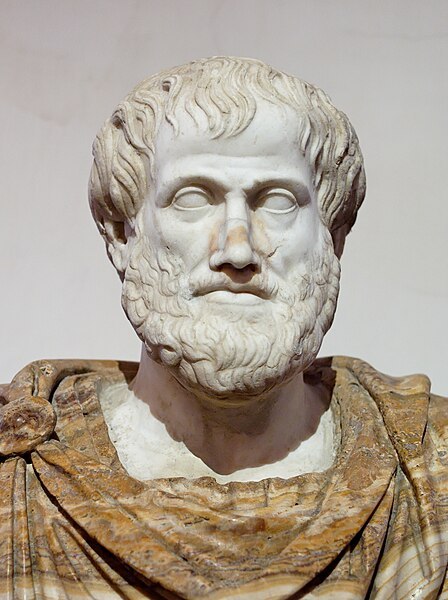
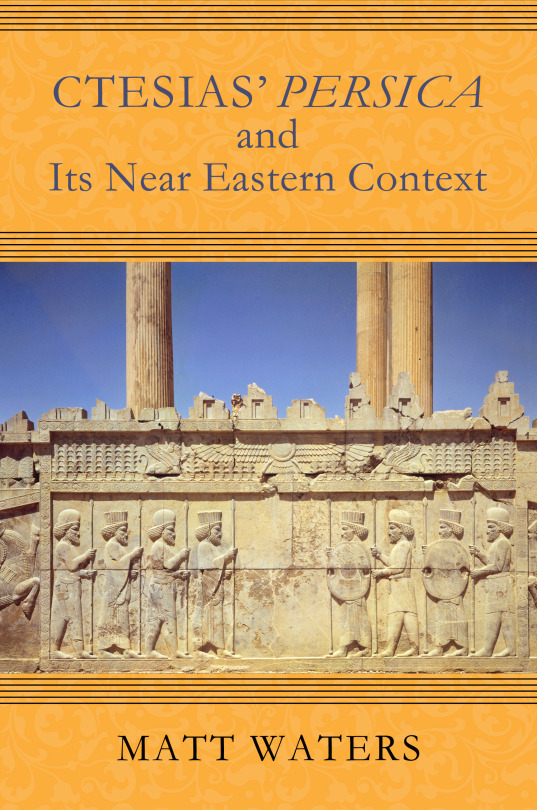
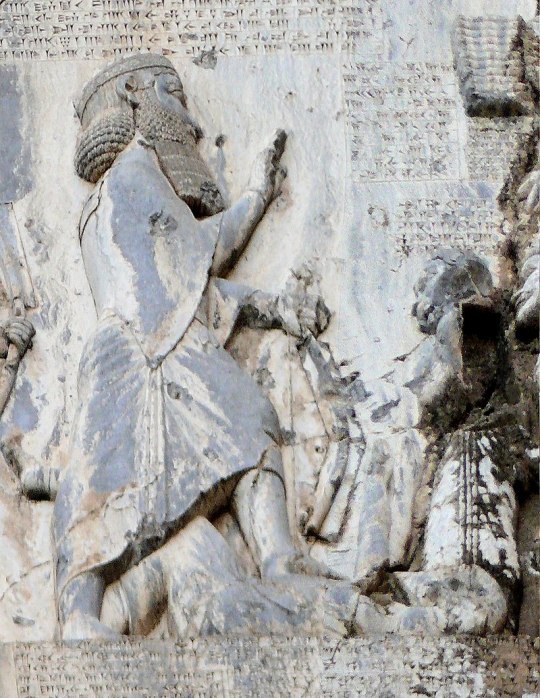
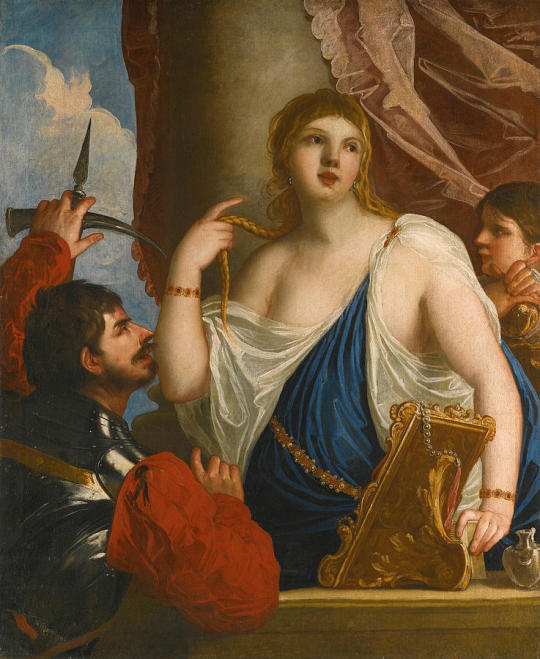
Contents
Introduction
I. A fictional concept: the origin of the fraud
II. A construct based on posterior textual sources
III. The deceitful presentation
IV. 5th century BCE texts found in 15th c. CE manuscripts do not make 'History'.
V. Abundant evidence of lies and deliberate distortions attested in the manuscript transmission
VI. Darius I the Great, the Behistun inscription, and Ctesias
VII. The historical Assyrian Queen Shammuramat and the fictional Queen Semiramis of the 'Ancient Greek sources'
VIII. The malignant intentions of the Benedictine liars: from the historical Darius I the Great to the fictional Semiramis
IX. The vicious distortions of the Benedictine liars: from Ctesias to Herodotus
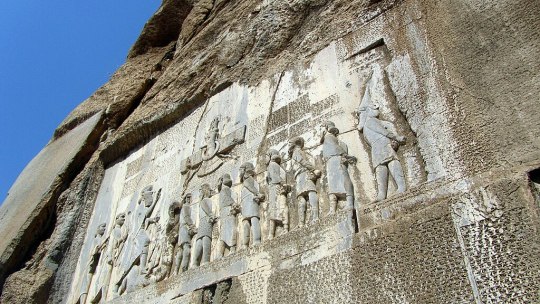
The Behistun inscription
Introduction
In the present article, I will offer a typical example of text falsification carried out by the Catholic monks, who did not 'copy and preserve' manuscripts of ancient Greek and Latin texts, as it has been mendaciously said by Western European and North American academics and lying scholars, but they purposefully falsified, distorted, concealed, destroyed and/or contrived numerous texts.
This enormous forgery took place in Western Europe between the 2nd half of the 8th century and the 1st half of the 15th century; the colonial era was launched exactly afterwards. For this reason, few manuscripts with Ancient Greek and Roman texts date before the 8th c.; in fact, most of them have been either distorted and replaced or hidden in the vast libraries still owned, controlled and administered that the anti-Christian Roman Catholic Church.
The purpose of this devious and evil effort was the fabrication of a fake narrative about the forged antiquity and the supposed importance of the Western Europeans according to the needs of world conquest, prevalence and preponderance of the pseudo-Christian Roman Catholic Church; this bogus-historical dogma, as direct opposition to and ultimate rejection of Orthodox Christianity, would be initially imposed as the 'scientific discipline of History' in Western Europe and subsequently projected onto the rest of the world by means of colonial invasion, indigenous identity destruction, moral integrity demolition, cultural heritage disintegration, educational subordination, economic exploitation, military subjugation, and socio-political domination.
In other words, the monastical scribes and copyists created an entirely fake Euro-centric past, which became the rotten foundation of Western Europe. This fallacy became known as Judeo-Christian world and Greco-Roman civilization. However, the decipherment of ancient languages (Egyptian hieroglyphic, Old Achaemenid Iranian, Assyrian-Babylonian, Sumerian, Hurrian, Hittite, Urartu, Ugaritic, etc) and the study of millions of original texts, which were not copies of earlier sources but contemporaneous to the events that they narrated, sounded the death knell of the era of history fabrication programs.
With the post-Soviet rise of the great continental powers (China, India, Russia, etc.), the economic-military-political-ideological-educational-academic-cultural tyranny of the Western World started being overthrown throughout the earlier colonized world. The historical forgery that the colonial rulers imposed collapsed, the falsehood of the Eurocentric dogma of World History started being revealed and rejected, and an overwhelming project of total de-Westernization appeared as a prerequisite for the liberation of the Mankind from the lies of the European Renaissance, the Western Humanities, the White Supremacism, the Western European colonialism and racism, as well as from the falsehood of numerous subsystems of the construct, such as Classicism, Hellenism, Orientalism, etc.
In our days, it is imperative for anti-colonial scholars to unveil the distortions applied to Ancient Greek and Latin texts by the medieval monks. Consequently, historians from all over the world have to work together in order to denounce and obliterate the Western fraud and the fake History of the Western Man, which consists in arbitrarily taking 14th c. CE manuscripts as authentic narratives of Ancient History.
I. A fictional concept: the origin of the fraud
Apparently, the present brief article cannot be an exhaustive presentation of the Western fraud, and of the historical forgery that the Western monks, manuscript copyists, collectors, academics and propagandists attempted to impose worldwide through colonial conquests, massacres and tyrannies. However, I can still enumerate the major founding myths of the Western World.
Two thematic circles of historical distortions and fraudulent claims made by the Western academia revolve around the following two entirely fabricated entities, which have conventionally but erroneously been called
a) "the Greco-Roman world" and
b) "Biblical Israel" and "Judeo-Christian civilization".
These ahistorical entities never existed. The original concept of those notions is purely fictional, and it therefore remains always unquestioned in the fraudulent Western universities. In this regard, the sources that the Western academics evoke to support their claims are posterior, untrustworthy, forged and therefore worthless.
At times, some of those texts represent merely ancient authors' misperceptions of earlier texts and authors; however, more often, the ancient texts have been tampered with. On other occasions, ancient texts that refute the lies of other historical sources are hidden from the general public and conventionally discussed among the Western academic accomplices.
II. A construct based on posterior textual sources
The entire construct hinges on the deceitful presentation of several types of material forged, collected, concealed, interpreted, contextualized, narrated, repeatedly but intentionally discussed, supposedly questioned, and selectively popularized; this was due to the fact that the said material was incessantly utilized for the colonial needs and targets of the Western European powers (England, France, Holland, Spain, Portugal, and more recently the US). In fact, the Western World's fake History was created as the ultimate support of all colonial claims.
This process happened within a system in which posterior textual sources (preserved in medieval manuscripts) have occupied the central position, whereas the ancient epigraphic material, which was contemporaneous to the historical events under study, has been deliberately disregarded.
All later discovered data and pieces of information were either adjusted to the construct or methodically hidden; this is how the original concept, pathetically believed almost as a religious dogma, remained totally unchallenged down to our days.
III. The deceitful presentation
The quintessence of the deceitful presentation involves a vicious trick; people (pupils and students, but also scholars and intellectuals, as well as the general public) are taught and made accustomed to care mainly about the absolutely insignificant dates of birth and death of historical persons (authors, rulers, etc.), and not about the dates of the manuscripts in which these individuals are mentioned as supposed authors; this situation turns readers, students and scholars into pathetic idiots.
Subsequently, we cannot seriously afford to describe Herodotus as a 5th c. BCE writer, because there is no manuscript with texts attributed to him, dating before the 10th c. CE. In addition, if we take into account the enormous number of other ancient authors decrying, denigrating and rejecting Herodotus' absurdities and malignancy, we have to permanently and irrevocably obliterate Herodotus from the History of Mankind and consider his false, paranoid and racist texts as a double Crime against the Mankind:
first, with respect to the original narrative (to which we don't have access as it was distorted by medieval monastical scribes and copyists) because the author attempted to disparage the superior Iranian civilization and the majestic Achaemenid universalist empire, while undeservedly praising the South Balkan barbarians, and
second, as regards the currently available text, which was forged as per the discriminatory intentions of the monks who altered and distorted it in their effort to fabricate the fake, modern divide (or dichotomy) East-West, and to offer a shred of historicity to it.
IV. 5th century BCE texts found in 15th c. CE manuscripts do not make 'History'.
People get therefore addicted to considering as a true and original 'work' (of an ancient author) the manuscript (or manuscripts) in which the specific treatise, essay or book was copied perhaps 10 or 15 centuries after the author composed it. Due to a long chain of intermediaries (namely library copyists, librarians, scholars, monks, collectors, purchasers and/or statesmen), the transmitted text may have been partly or totally changed.
There is absolutely no guarantee as regards the honesty, the good intentions, the unbiased attitude, and the benevolent character of the perhaps 5, 10, 20 or 50 persons who -living in different eras and without knowing one another- may have constituted the chain of (unknown to us) intermediaries between the hand of the author and that of the last copyist whose manuscript was preserved down to our times.
Example: very little matters today whether the ancient author Diodorus Siculus or Siceliotes (西西里的狄奧多羅斯) actually lived in the 1st c. BCE or in the 3rd c. CE; quite contrarily, what is important for history-writing is the fact that the earliest known manuscript of his famous 'Bibliotheca Historica' (世界史) dates back to the 10th c. CE.
Consequently, the first piece of information that should be stated after the name of any 'ancient' Anatolian, Macedonian, Thracian, Greek, Roman and other author is the date of the earliest extant manuscript of his works.
V. Abundant evidence of lies and deliberate distortions attested in the manuscript transmission
An extraordinarily high number of original sources excavated in Mesopotamia, Egypt, Anatolia, Canaan, Iran and elsewhere, and subsequently deciphered, can be dated with accuracy; example: the Annals of great Assyrian emperor Tiglath-pileser III (745-727 BCE) were written during his reign. They are contemporaneous and therefore original.
However, in striking contrast to them, almost all the manuscripts with the works of ancient Greek and Roman authors whose texts have formed the backbone of the fraudulent historical dogma of the Western academia are not contemporaneous but posterior by, at times, 1500 or 2000 years.
Even worse, numerous ancient Greek authors' texts were not preserved through a manuscript tradition at all; they were saved as references in posterior authors' works. This concerns, for instance, Ctesias (克特西亞斯), an Ancient Carian (Anatolian) physician and erudite scholar, who lived and worked in the court of the Achaemenid Iranian emperor Artaxerxes II in the 5th c. BCE.
Later, willing to offer potential guidebooks to Iran and India for the use of various peripheral peoples and tribes of the Balkan region, Ctesias elaborated in Ancient Ionian (愛奧尼亞希臘語) two treatises to describe the state of things in Iran and in India. To the Western academic bibliography, his works are known (in Latin) as 'Persica' and 'Indica'.
These texts were not saved integrally in manuscripts copied for the purpose of preserving Ctesias' works, but they were preserved in Diodorus Siculus' 'Bibliotheca Historica'. Although he is not known through authentic and contemporaneous Iranian sources, we can deduce that Ctesias certainly spoke fluently the official language of the Empire and read Old Achaemenid cuneiform. Eventually, he may have also studied and learned Babylonian and Elamite cuneiform, namely two ancient Mesopotamian cuneiform languages and writings the use of which was maintained by Iranian scribes.
Apparently, Ctesias had a firsthand insight, as he lived for many years in Parsa (Persepolis), the capital of the Achaemenid Empire and he also traveled extensively along with the Iranian emperor. But, unfortunately, the following ordeal was produced.
VI. Darius I the Great, the Behistun inscription, and Ctesias
One century before Ctesias served Artaxerxes II, the empire of Iran was saved by Darius I the Great (大流士一世; reign: 522-486), who overthrew a usurper, namely the Mithraic (密特拉教祭司) magus Gaumata (高墨达), and by so doing, preserved on the throne a dynasty of faithful Zoroastrian (瑣羅亞斯德教徒) monarchs.
To commemorate his great victory and the consolidation of the his dynasty, Darius I the Great had an enormous rock relief and a monumental inscription (貝希斯敦銘文) engraved on the rocks of Mount Behistun (貝希斯頓山), at a distance of 150 km west of Hamadan (哈马丹; Ekbatana/埃克巴坦那) in Western Iran (15 m high by 25 m wide and 100 m up the cliff). As it can be easily understood, these events occurred after the assassination of Cambyses, at the very beginning of Darius I the Great's reign.
It goes without saying that the successors of Darius I the Great and the imperial Iranian administration knew perfectly well the historical details and were fully aware of the imperial inscription that immortalized the event, which had obviously become the cornerstone of the imperial education.
VII. The historical Assyrian Queen Shammuramat and the fictional Queen Semiramis of the 'Ancient Greek sources'
However, one century later, when Ctesias lived in Iran, served the Iranian Emperor, and spoke Old Achaemenid Iranian (and if not, he was surrounded by the Empire's top interpreters and advisers), something disastrously odd 'happened'.
According to Diodorus Siculus, who explicitly stated that he extensively quoted from Ctesias' text (Bibliotheca Historica, II 13), the imperial Carian physician and author appears to have attributed the Behistun inscription and the rock reliefs to none else than the Assyrian Queen Shammuramat (薩穆-拉瑪特), who was the queen consort of the Assyrian Emperor Shamshi Adad V (沙姆什·阿達德五世; reign: 824-811) and co-regent (811-805) during the first years of reign of her son Adad Nirari III (阿达德尼拉里三世; reign: 811-783)!
Furthermore, in the 'Ancient Greek' text of Diodorus Siculus, the monumental inscription was said to be written in Assyrian cuneiform (Συρίοις γράμμασιν)! Even worse, in the same text (as preserved today), it was also stated that, in the rock relief, there was also a representation of the Assyrian queen!
Ctesias' text, as preserved by Diodorus Siculus, is truly abundant in information, but it is historically impossible and therefore entirely forged. Due to this and many other texts, an enormous chasm was unnecessarily formed between
a) the historical queen Shammuramat of Assyria, whose historicity is firmly undeniable, due to the existence of several contemporaneous cuneiform sources excavated in Assyria, and subsequently deciphered and published,
and
b) the purely fictional Assyrian queen Semiramis (沙米拉姆) of the posterior Ancient Greek textual sources that were supposedly 'preserved' (but in reality deliberately distorted and forged) in the Benedictine manuscripts of Western Europe's monasteries.
However, if we examine closely the facts, we will surely understand what truly occurred in this case; then, we will be able to fathom how the fake History of the Western world was fabricated.
The Behistun inscription is trilingual, as it was written in Old Achaemenid Iranian (the earliest form of written Iranian languages), Babylonian, and Elamite; this was a very common practice during the Achaemenid times (550-330 BCE). The main figure of the associated rock relief is Darius I the Great, evidently the representation of a male royal.
One way or another, with respect to the Behistun inscription and rock relief, Ctesias certainly knew everything that we know today after the successive decipherments of the Old Achaemenid, Babylonian and Elamite cuneiform writings, or perhaps even more, due to the then extant oral tradition.
VIII. The malignant intentions of the Benedictine liars: from the historical Darius I the Great to the fictional Semiramis
The Behistun inscription is not Assyrian; the representation is not that of female royal; and the monument is totally unrelated to Shammuramat, who had lived 300 years before Darius I the Great and 400 years before Artaxerxes II's physician Ctesias. More importantly, by that time, the Assyrian Empire did not occupy the lands surrounding Behistun. Accompanied by Iranian imperial officers and his associates, Ctesias certainly learned all the details of the monumental inscription that we can now read in articles, courses, lectures, books and encyclopedias.
The narrative was a triumph for Darius I the Great and a spectacular rebuttal of the vicious Mithraic Magi who had supported the defeated evil sorcerer and villain Gaumata. Apparently, writing a guidebook for Iran to help marginal people of the Empire's Balkan periphery, Ctesias did not have any reason to say lies. Moreover, we don't have any reason to believe that Diodorus Siculus needed to distort the truth to that extent, when copying and thus preserving Ctesias' masterpiece for the posterity.
However, the transmission of the details about the Behistun inscription embarrassed the Benedictine copyists who wanted to denigrate Darius I the Great and to portray his great empire in a most derogatory manner. They had already proceeded in this manner, distorting other manuscripts, forging texts, and fabricating their pseudo-historical narratives at will.
That is why Ctesias' pertinent text, which had certainly been preserved in its original form within Diodorus Siculus' Bibliotheca Historica, was intentionally distorted by the Benedictine 'Holy Inquisition of Libraries', which fabricated the myths of today's Western world some time after the middle of the 8th c. CE. To be accurate, Ctesias' historical description was entirely replaced by a fictional and historically nonsensical account.
The unbelievable lies -invented and included in Diodorus Siculus' quotations from Ctesias- risked making of the fictional queen Semiramis a world ruler! Whereas the Assyrian Empire at the end of the 9th c. BCE did not control even the western half of today's Iranian territory, the unequivocally mythicized Semiramis had supposedly sent her armies up to India where those fictitious Assyrian soldiers were trampled by the elephants. This worthless narrative that replaced Ctesias' original text may very well have been invented as a 'historical' excuse for Alexander the Great's failure to advance deep inside India.
IX. The vicious distortions of the Benedictine liars: from Ctesias to Herodotus
But if the fictional Semiramis' Indian campaign is entirely false, so are then the preposterous narratives of Herodotus about Darius I the Great's and Xerxes I the Great's campaigns in the insignificant and barbarian circumference of South Balkans. These texts involved evil purposes, heinous anti-Iranian biases, fictional battles, racist discourses, vicious lies, incredibly large number of the Iranian armies, and absurdly high number of Iranian casualties.
The mendacious but idiotic Benedictine monks, who wrote those slander tales did not apparently expect that, sometime in the future, excavations would bring to light splendid Iranian antiquities, original cuneiform documentation, and trustworthy contemporaneous historical sources, whereas a systematic effort of decipherment would offer to people all over the world direct access to historical texts written in dead languages, thus irrevocably canceling Herodotus' nonsensical report and, even more importantly, the later distortions that the Benedictine monks made on their worthless manuscripts.
In any case, had those fictional campaigns against 'Greece' had a shred of truth to them, they would have certainly been documented one way or another in various Old Achaemenid, Babylonian, Elamite, Imperial Aramaic, Egyptian hieroglyphic or other sources; but they were not.
Even worse, the meaningless and ludicrous battles of Marathon, Thermopylae, Salamis, and their likes would have been commemorated by the Seleucids, the Ptolemies, and the Attalids all the way down to the Romans and the Eastern Romans. But we know quite well that the nonexistent, fictional past of the so-called Ancient Greek world was absolutely irrelevant to them: precisely because it had not yet been fabricated.
===================
Aristotle as Historical Forgery, the Western World’s Fake History & Rotten Foundations, and Prof. Jin Canrong’s Astute Comments
Contents
I. Aristotle: a Major Founding Myth of the Western World
II. When, where and by whom was the Myth of Aristotle fabricated?
III. The Myth of Aristotle and its first Byproducts: Scholasticism, East-West Schism, the Crusades & the Sack of Constantinople (1204)
IV. Aristotelization: First Stage of the Westernization and the Colonization of the World
V. Aristotelization as Foundation of all the Western Forgeries: the so-called Judeo-Christian Heritage and the Fraud of Greco-Roman Civilization
VI. The Modern Western World as Disruption of History
VII. The Myth of Aristotle and the Monstrosity of Western Colonialism
======================
Download the article in PDF:
#Ctesias#Diodorus Siculus#Behistun Inscription#iran#Achaemenid#Behistun#Bisotun#Darius I the Great#Gaumata#Mithraism#Zoroastrianism#Ahura Mazda#Mithra#Xerxes I#Herodotus#Ancient Greeks#manuscript transmission#Shamshi Adad V#Adad Nirari III#Shammuramat#Semiramis#Benedictines#Renaissance#Classicism#Classics#Orientalism#Hellenism
1 note
·
View note
Text
Child drinking milk from a cow's udder & playing
#gaumata #MotherCow #cow #love #biggboss #gaushala #instagram #desicow #india #krishna #cows #gau #gircow #hindu #kankrej #kutch #gir #kankrejlove #guzerat #guzera #kutchkankrej #girlechero #beautiful #colorstv #sidharthshukla #guzeraoficial #sidnaaz #guzolando #vrindavan #gomata #gauseva
Know more about #Hinduism from here: https://bhagavanbhakthi.com/
#gomata#gomaata#mother cow#gaushala#gaumata#gaumaata#hinduism#hindu mythology#krishna#vishnu#lord vishnu
1 note
·
View note
Text

Support Gaushala Shree Krishna Sudama Gauraksha Dham and help us improve the trajectory of humanity. Donate now to help preserve and defend our sacred Gaumata!
For Support Contact Us:-
Mobile No:-+91-9873717355, +91 9990848242
#गौरक्षा#गौरक्षाकीरक्षा#हमारीगौमाताकीदेखभाल#गौरक्षाकेसंरक्षक#गौसेवा#गौवंशकीरक्षा#गौपालन#गौसंरक्षण#गौमाताकीआराधना#गौसम्मान#SupportGauRaksha#donateforacause#PreserveOurHeritage#gaumatakijaiho#gaurakshamission#mothercow#gaumata#gauseva#CowShelter#animalwelfare
0 notes
Text

No act of care, compassion, and devotion toward Mother Cow and Gaushalas is ever wasted. It always leads you to a rich and righteous life.
#gaumata #tuesdayvibe #TuesdayMotivaton
#Worlds2022 #WorldAnimalDay #World #AnimalWelfare #animals #quote #quotes
#HariOm
#gaumata#tuesdayvibe#TuesdayMotivaton#Worlds2022#WorldAnimalDay#World#AnimalWelfare#animals#quote#quotes#HariOm
0 notes
Photo

May Goddess Durga shower her blessings on you and your family and help you achieve all that you want in life #navratrispecial #gavyashree #holygaumata #harekrishna #bilonaghee #desiproducts #villageproducts #savecow #gaumata #vrindavan #maadurga #maabhavani #kalimaa #healthykitchen #desicowghee (at Vrindavan) https://www.instagram.com/p/Ci8yO5MIV1U/?igshid=NGJjMDIxMWI=
#navratrispecial#gavyashree#holygaumata#harekrishna#bilonaghee#desiproducts#villageproducts#savecow#gaumata#vrindavan#maadurga#maabhavani#kalimaa#healthykitchen#desicowghee
0 notes
Photo
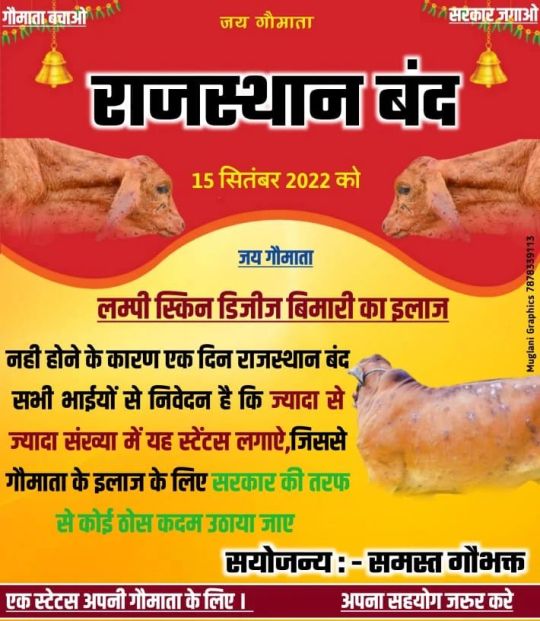
मंदिरों की प्रबंधन कमेटी के पास अरबों रुपये का चढ़ावा है,💵💵 VIP दर्शन से करोड़ों का पैसा आता है गायों के लिए जमीन गोचर में आज करोड़ों लोग बसे हुए है!!🙏🏻🤨😏 मोटी-मोटी फीस लेने वाले कथावाचक महाराज जो पूरे दिन में सनातन धर्म में गाय माता के महत्व को बताते हैं,राजनेता गाय के नाम पर सरकारें बनाते है,हर दुकान पर गौ सेवा दानपात्र रखा जाता है!!🐄🐄 फिर भी अगर इतनी विकट घड़ी लिम्पी जैसी खतरनाक बीमारी में गायों के लिए इनका पैसा और सहयोग काम नही आया तो आखिर इनका पैसा काम कहाँ आयेगा❓😏😏😏 पोस्ट अच्छी और सच्ची लगें तो शेयर जरूर करें!! #gaumata https://www.instagram.com/p/CidSC1MhgdZ/?igshid=NGJjMDIxMWI=
0 notes
Text
سوڈان: لڑکے کے قتل میں ملزم کے ساتھ ’گئو ماتا‘ بھی گرفتار،مقدمہ درج
سوڈان: لڑکے کے قتل میں ملزم کے ساتھ ’گئو ماتا‘ بھی گرفتار،مقدمہ درج
سوڈان: لڑکے کے قتل میں ملزم کے ساتھ ’گئو ماتا‘ بھی گرفتار،مقدمہ درج
خرطوم،8جون ( آئی این ایس انڈیا )
جنوبی سوڈانی حکام نے ایک 12 سالہ لڑکے کے قتل کے الزام میں ایک گائے اور اس کے مالک کو گرفتار کرنے کا دعویٰ کیا ہے۔ جنوبی سوڈان میں کسی گائے کو قتل کے مقدمہ میں گرفتار کرنے کا یہ انوکھا واقعہ ہے تاہم اسی ملک میں ایک ماہ قبل ایک مینڈھے کو 45 سالہ خاتون کو ہلاک کرنے کے الزام میں گرفتار کیا گیا…

View On WordPress
0 notes
Photo
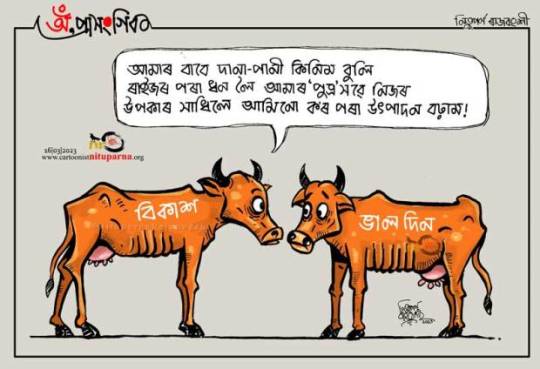
(via দানা-পানীৰ সমস্যা)
0 notes
Text
🐮 गोपाष्टमी - Gopashtami 2022
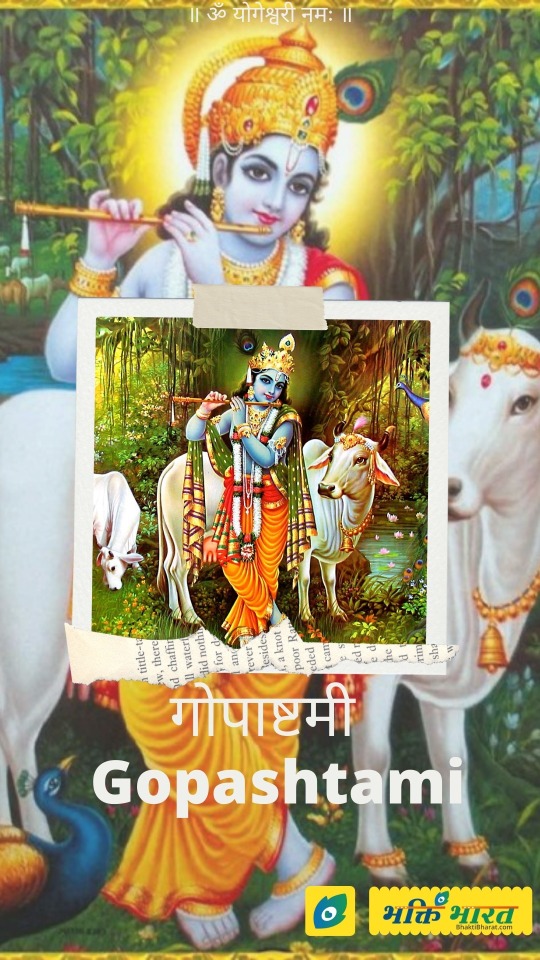
स त्वां कृष्णाभिषेक्ष्यामि गावं वाक्यप्रचोदितः ।
उपेन्द्रत्वे गवामिन्द्रो गोविन्दस्त्वं भविष्यसि ॥ [ विष्णु पुराण 5/12/12 ]
भावार्थ - हे कृष्ण! अब मैं गौऔं के वाक्यानुसार ही आपका उपेंद्र पद पर अभिषेक करूँगा तथा आप गौऔं के इंद्र हैं, इसलिए आपका नाम गोविंद भी होगा।
❀ जब भगवान श्री कृष्ण पौगंड अवस्था में पहुँचे, तब गोपाष्टमी के दिन नंद महाराजा ने गायों और श्रीकृष्ण जी के लिए एक समारोह किया।
❀ यह श्री कृष्ण के लिए गायों को पहली बार चराने के लिए ले जाने का दिन था।
गोपाष्टमी पर्व से जुडी प्रसिद्ध पौराणिक कथाओं को जानने के लिए नीचे दिए गये लिंक पर क्लिक करें..
📲 https://www.bhaktibharat.com/festival/gopashtami
For Quick Access Download Bhakti Bharat APP:
📥 https://play.google.com/store/apps/details?id=com.bhakti.bharat.app
🎋 श्री गौमता आरती - Shri Gaumata Aarti
📲 https://www.bhaktibharat.com/aarti/shri-gaumata-ji-ki-aarti
#Gau #GauMata #gopashtami #gopashtmi #gauastami #gopalashtami #gaushala #gausewa
0 notes
Text
It’s a crime that nobody has made a cool movie or series based on the Anabasis or the founding of Persia and Cyrus or maybe Darius I and his wild ascension story— Like Gaumata real? Not real?? So many versions—
#history#historical artifacts#achaemenid#achaemenid history#ancient history#history memery#achaemenid memery
17 notes
·
View notes
Text
Celebrating Special Moments with Compassion: A Gift to Gaumata at Shree Krishnayan Gaushala

As we approach significant milestones in our lives, such as birthdays, anniversaries, or retirement, it's natural to want to make these occasions truly meaningful. Imagine celebrating your special day not just with joy for yourself but by extending that joy to beings who depend on our compassion - the sacred Gaumata, or mother cows, at Shree Krishnayan Gaushala.
Shree Krishnayan Gaushala is a sanctuary dedicated to the well-being of these gentle creatures, revered in the Hindu religion. Your generous contribution to this goshala goes beyond traditional celebrations, creating a positive impact on the lives of Gaumata who provide us with so much.
By directing your funds to Shree Krishnayan Gaushala, you play a pivotal role in ensuring that these sacred animals receive the care they deserve. Your donation contributes to providing essential necessities such as food, medical treatment, and overall comfort for the cows, transforming your special day into an opportunity for altruism and compassion.
The act of giving back on your birthday, wedding anniversary, or any other red-letter day is not only a selfless gesture but also an inspiration to your loved ones. Your family and friends will be touched by your choice to celebrate by making a positive impact on the lives of these gentle creatures. It's a unique way to share the joy and abundance of your special day with those who may not have a voice but certainly feel the warmth of your kindness.
Consider Shree Krishnayan Gaushala as the recipient of your generosity, allowing your contribution to be a force for good. The goshala rescues and shelters cows and becomes a beacon of hope and care for these giving animals. Your act of kindness creates a lasting legacy, leaving a positive imprint on the world.
As you plan your next celebration, think beyond the traditional gifts and parties. Make your special day a reflection of the positive change you wish to see in the world. Contribute to the operation of Shree Krishnayan Gaushala and let the celebration of your milestones be a celebration of compassion, kindness, and the interconnectedness of all living beings.
2 notes
·
View notes

